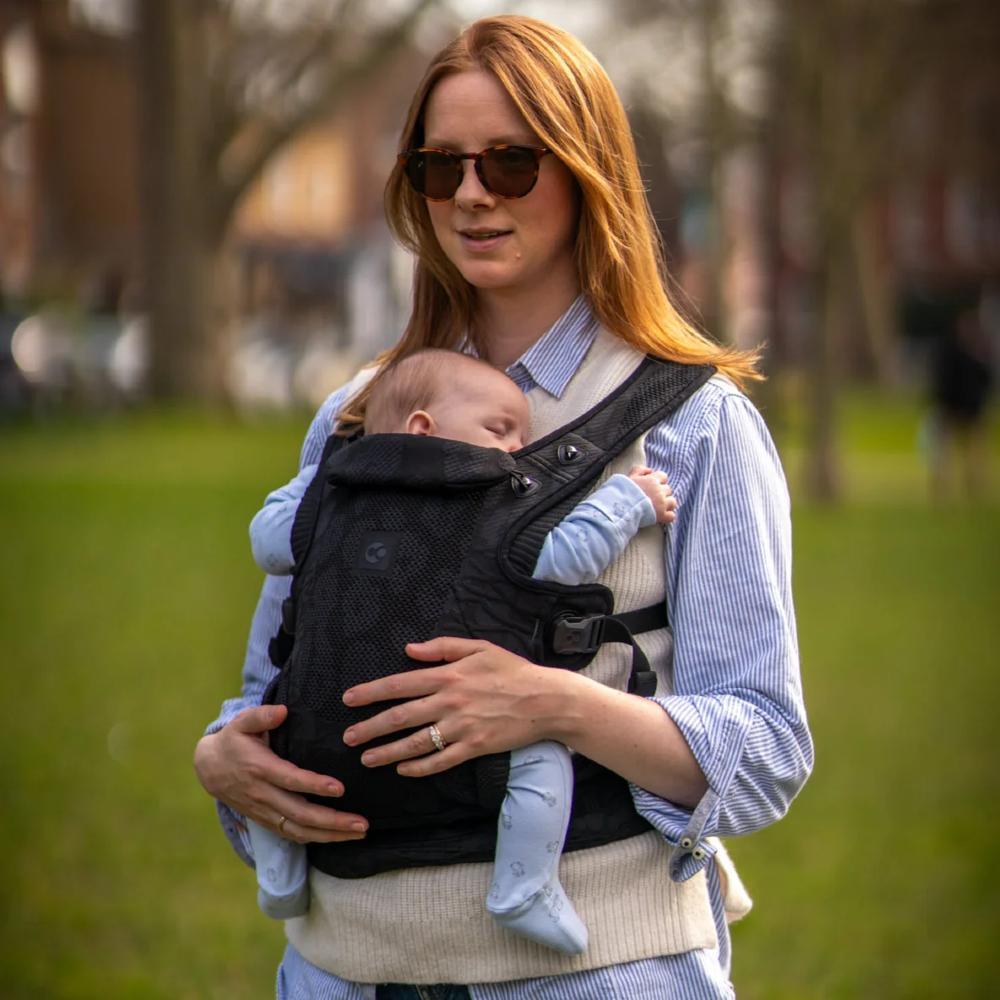There are so many benefits to babywearing and for many people the need to use a baby carrier starts from birth. Babywearing during the fourth trimester is so beneficial for your baby as they adjust to the world outside the womb, and for parents being able to meet their new baby's need for closeness. You do need to be more cautious with a smaller baby, however it is safe to use a baby carrier from newborn if the carrier is correctly fitted and is designed to properly support a newborn baby.
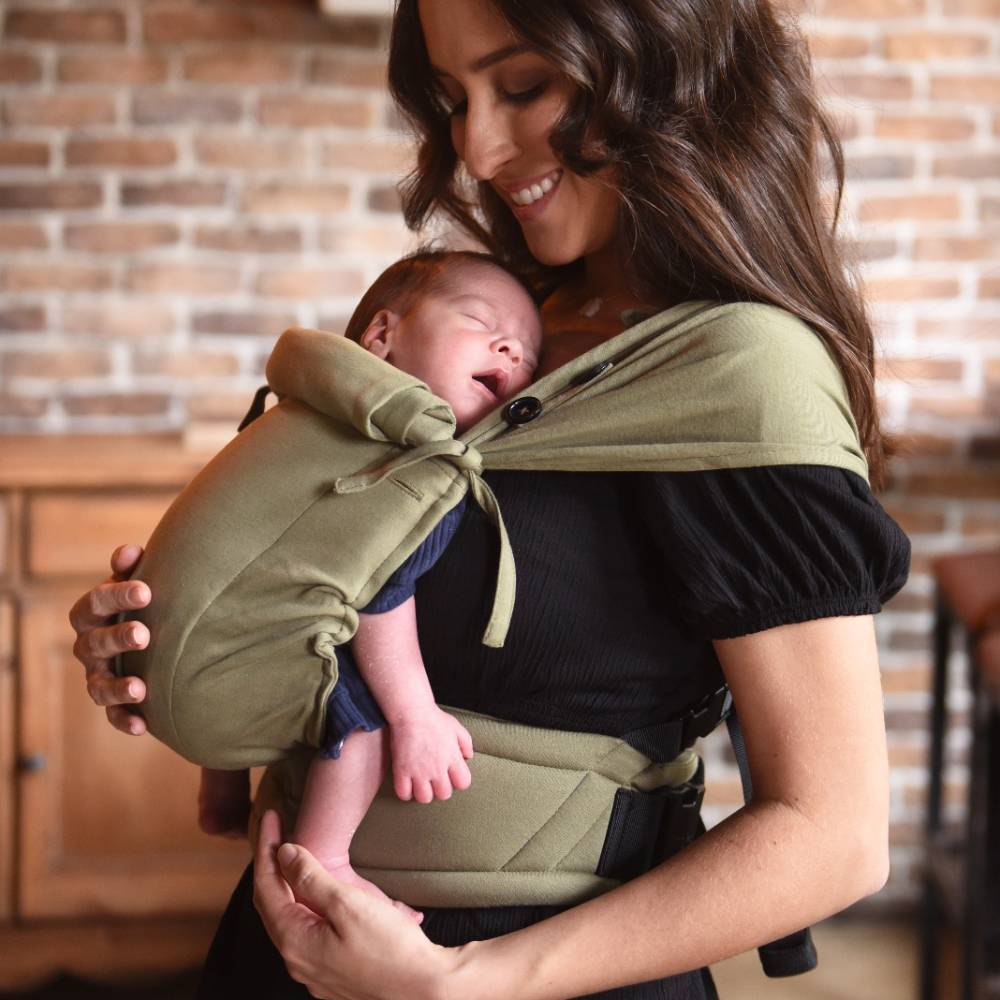
Photo of a newborn in the Neko Tiny carrier.
Some of these benefits include:
- Promotes bonding through the release of oxytocin
- Can be a great aid for skin-to-skin contact which helps with attachment and emotional connection.
- Allows you to be hands-free so that you can meet the needs of your other children and get things done whilst keeping them close.
- Helps with temperature and heartrate regulation.
- Soothes the baby: The gentle motion and closeness often calm crying and help babies sleep.
- Supports their physical development by being held upright aiding digestion and reduces reflux.
Positioning of your baby
- Keep your newborn upright in the carrier, not in a sideways position.
- Start with the waistband high to help hold them high on your chest.
- Make sure the baby’s legs are in the M-position — knees higher than bottom, thighs supported. You want them supported in the same position they are when held in arms on your chest.
- Avoid fabric covering the baby’s face or holding their face onto your chest.

Safety whilst wearning a newborn
Newborn babies need more support from a baby carrier than older babies do. This is because babies are not born with the core muscles to hold themselves upright in a sitting position, so you need to have a carrier that fits your little one and supports them in this upright position. If you are finding that they are slumping sideways then there might not be enough support from the carrier to keep them upright. A simple trick to help can be moving their hands up by their face as this can help. Their airways can become compromised easier as they do not have the strength to hold up their head at all times, or the strength to prevent themselves from slumping.
Pay very close attention to your baby's airways at all times
The TICKS guidelines offer general safety advice.
- TIGHT - carrier should hold babies firmly without moving about
- IN VIEW - you need to be able to SEE baby's mouth and nose are clear
- CLOSE ENOUGH TO KISS - wear babies high on the firm part of your chest, not down in soft squishy breasts.
- KEEP CHIN OFF CHEST - also to protect airways, ensure baby's head isn't held in a position that could cut off their airways (such as in a lying down position in a sling)
- SUPPORTS SPINE - Again to ensure baby is upright, spine is well supported and not slumping in the carrier.
Height of the panel
The height of the carrier panel should come to the bottom of your little ones ears. You DO NOT want your newborns head to be pushed against your chest or to be held by the carrier, they need to be able to move their head freely and look around. If they are positioned well in the carrier then their head should natually rest on your chest when they are not looking around. If your carrier has a flap that can be used to extend the carrier (i.e. Ergobaby Omni Carriers, Carifit, Beco carriers), this should be down for a newborn. They designed to be an extention of the panel to use as your little one grows, not a head support to hold your newborns head. Remember, with the top of the panel you shoudl always: Keep it nice and clear, below the ear.
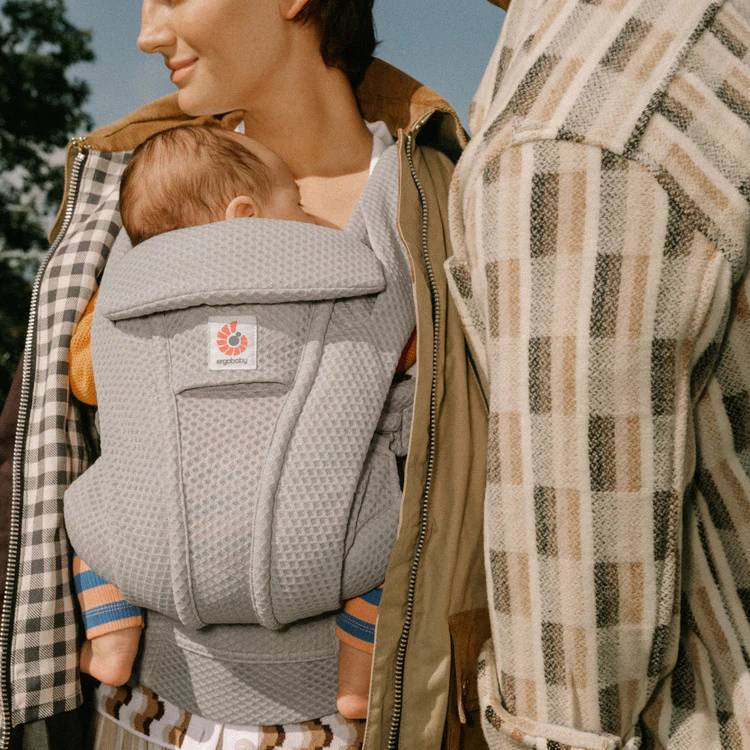
Hoods should not be used to cover a newborn as they prevent you from being able to see your little ones face to monitor them. Some carriers allow you to use a pass to support your little ones head whilst they are asleep, just ensure that it only goes to the ear covering the back of their head and that their airways are completely clear.
Best Baby Carrier Types for Newborns
Most baby carriers are safety tested from approx 3.2kg, however many carriers are still too big to support a newborn baby correctly. It is important that not only do you read your carrier's instructions, but you also seek prefessional help from a babywearing consultant or babywearing educator to if you are unsure about how to use your carrier and get a good fit.
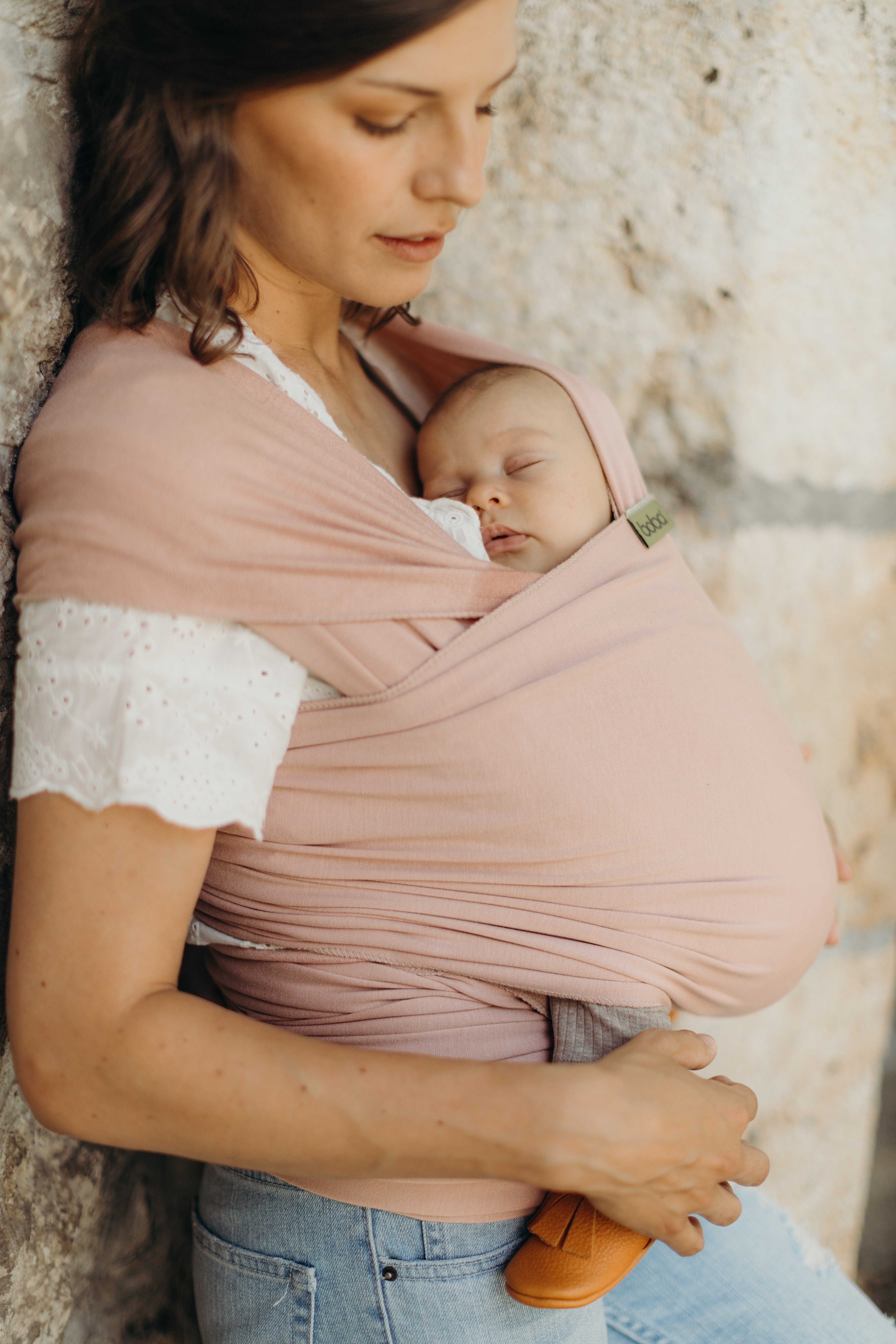
Stretchy Wraps:
- Ideal for newborns up to about a year old.
- Soft, snug, and supportive for small babies.
- Perfect for skin-to-skin contact.
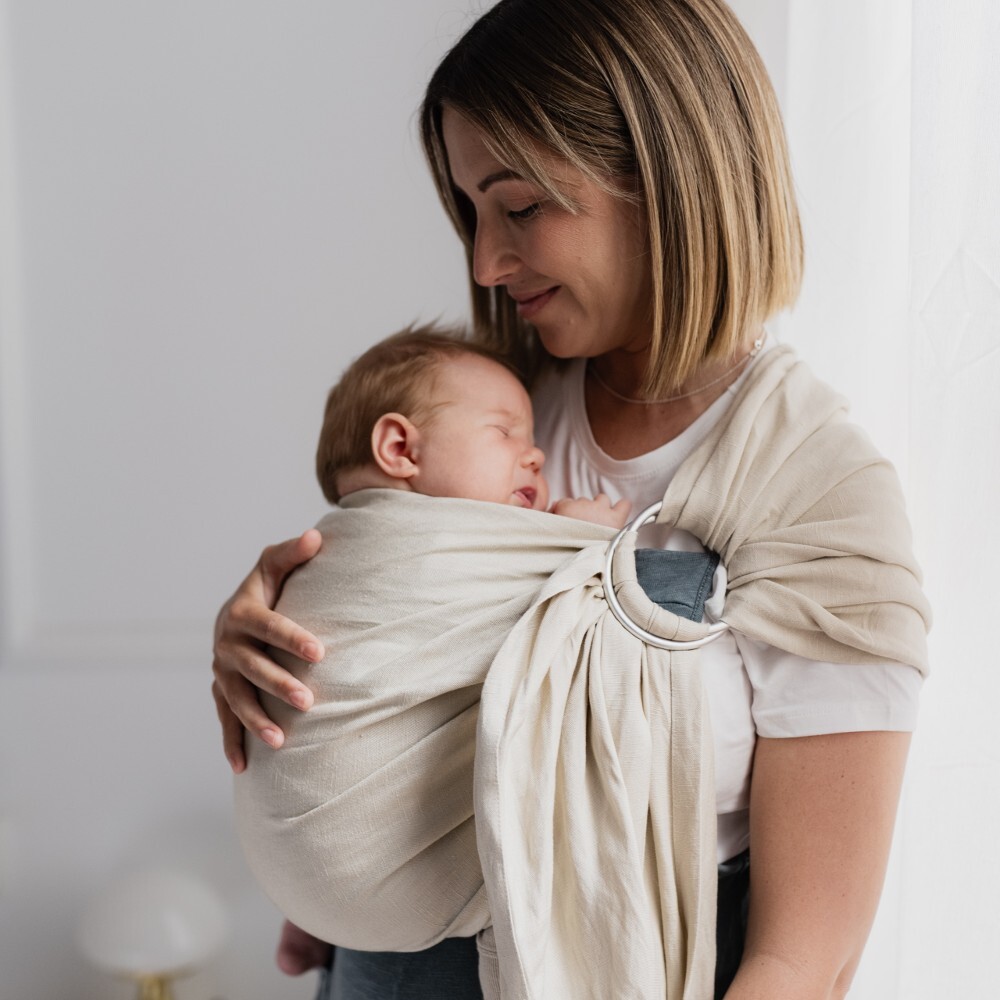
Ring Slings:
- Quick to put on once you get the hang of it.
- Great for breastfeeding on the go as it is so easy to adjust.
- Can be used from newborn until preschool years
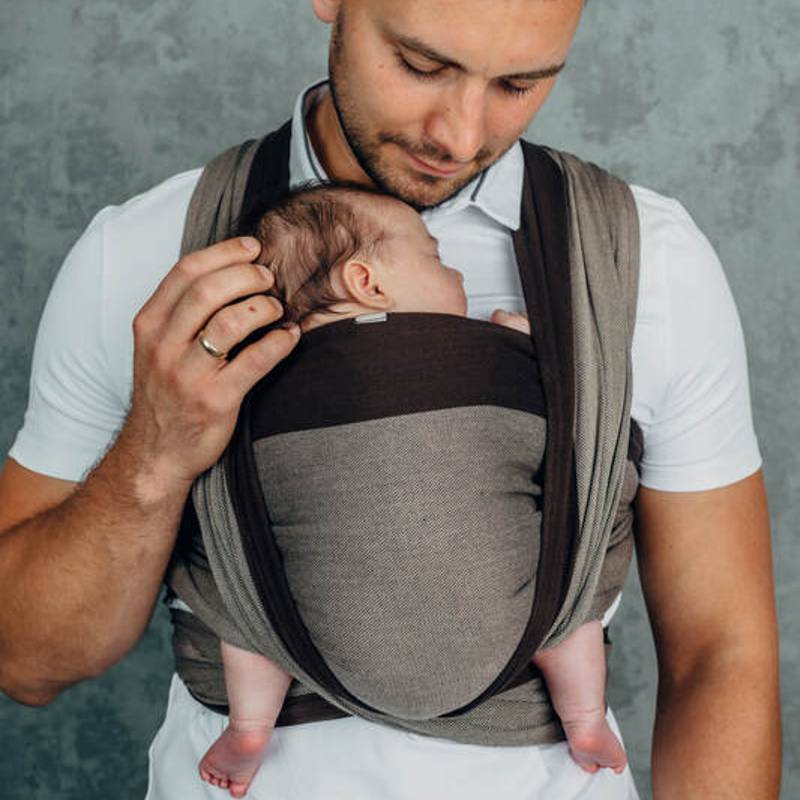
Woven Wraps:
- Supportive from newborn through to toddlerhood.
- Requires a bit of learning for proper tying, but there are enless tying options to fit everyone.
- Can be used on your front and back with a newborn.
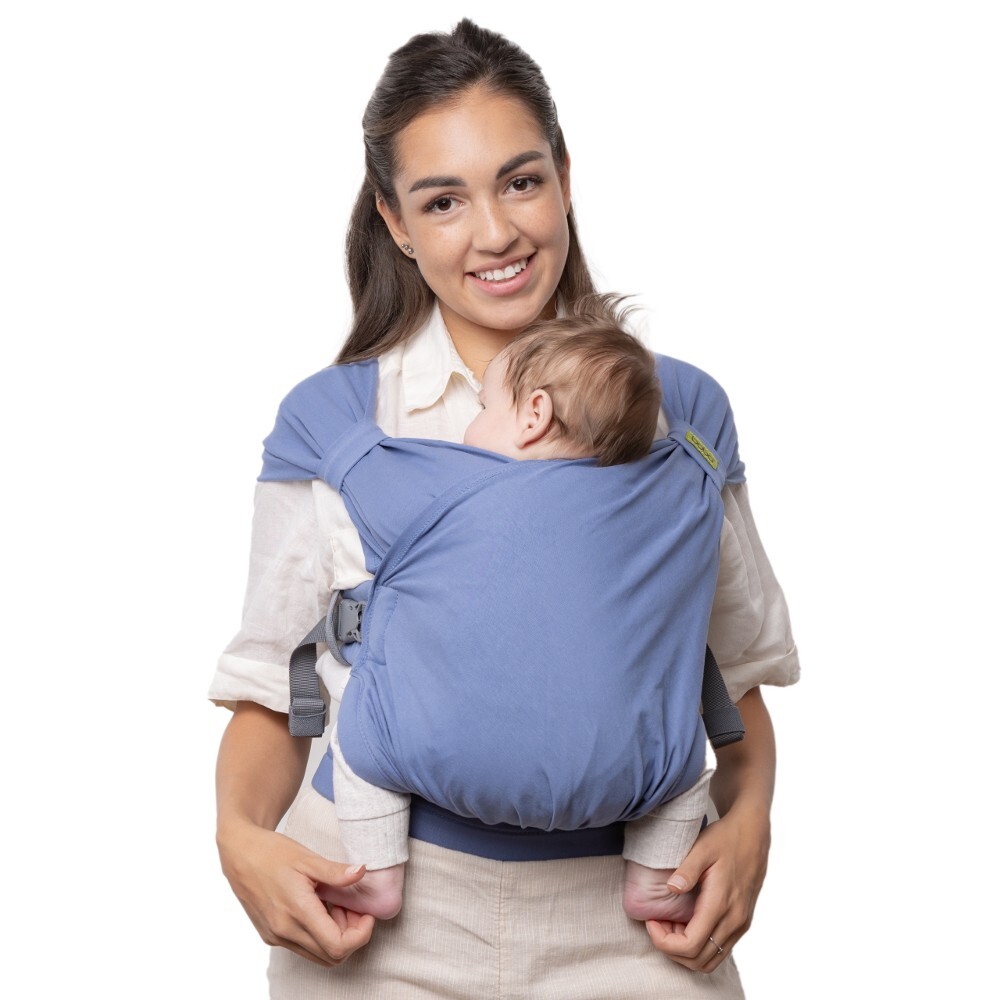
Newborn hybrid carriers (i.e. Boba Bliss, Neko Tiny)
- Are designed to fit a newborn right away and will grow with your baby for the first few months
- Are often softer and have less struture, but are still very supportive
- Less fabric to deal with and minimal adjustments to get a good fit

Meh dai/half buckle carriers:
- Intuitive carrier with most being adjustable to fit from a few weeks old
- Can be used on your front and back with a newborn
- Size inclusive for all wearers
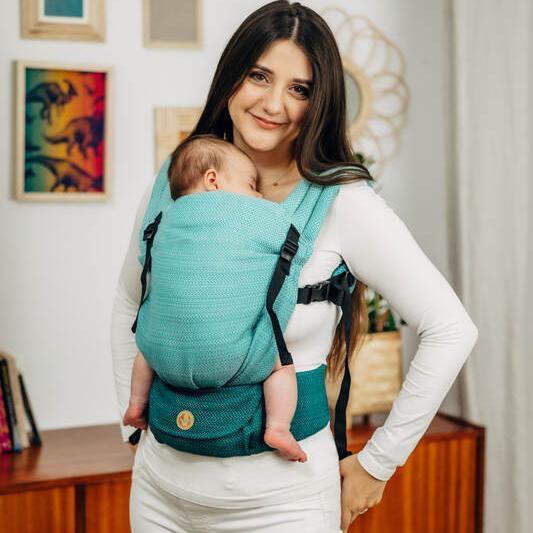
Buckle Carriers:
- Some models have newborn inserts or adjustable panels for smaller babies (e.g., Ergobaby Omni Breeze, Boba X).
- Less of a learning curve than other carrier options.
- Many adjustable buckle carriers are still too big for newborns despite them being advertised to use from newborn. Most buckle carriers fit from around 4-6 weeks of age.
Closed toe outfits
Closed toe pants/outfits are not recommended when using a baby carrier. This is because when their legs are positioned in a sit/squat position the fabric around their toes pulls and tightens around their toes. If you choose to dress your little one in closed toe pants, either size up or make sure that there is extra room around their toes to avoid their toes being curled over.
